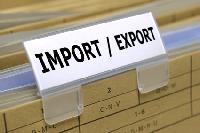
Duty credit scrip is the most popular export promotion incentive provided by the government to exporters. The purpose of the scheme is to promote exports by giving import tariff concessions to exporters (for helping them to import machineries and components they use for producing exportable goods). Under the scrip, exporters can get import tariff (customs duty) concessions to a specific percentage of their export value.
What is duty credit scrip?
A duty credit scrip is a certificate (or scrip) that can be used by its holder for the payment of import tariff (customs duties).
Or in other words, it is a pass that allows the holder to import commodities by not paying a specified amount in import duties. Following are the main features of duty credit scrip:
- They are issued to exporters by the Director General of Foreign Trade (DGFT)
- The scrip allows duty deduction (non-payment of taxes) of a specified amount in the scrip. The scrip value or the amount of tax deduction will be specified in the scrip.
- The scrip value or tax reduction is expressed as a percentage of export turnover of the exporter.
- The scrip value usually varies between 3 per cent to 5 per cent under Foreign Trade Policy 2015.
|
What duties can be paid by using the duty credit scrip? Following types of customs duties can be paid by using the duty credit scrip.
2. Safeguard Duty 3. Transitional Product safeguard duty 4. Anti-dumping duty. |
Basically, duty free scrips are paper authorizations that allow the holder to import inputs that go into manufacture of products that are exported or machinery used for producing such goods without paying duties equivalent to the printed value. The scrips are given to exporters for producing certain identified goods and exporting it to specific markets (the goods and markets are specified in the EXIM Policy). Main objective of the scrip is to incentivize the exporters to make more exports of specific commodities/services and those to specific markets. The FTPs (Foreign Trade Policies) usually mention the schemes eligible for scrips and the value of scrips.
It is also used to reimburse duties on imported inputs under schemes such as the export promotion capital goods scheme, the duty-free import authorisation scheme and the advance authorisation scheme.
|
How the duty credit scrip works? The exporter gets a scrip of 2% to 5% (of his export value) depending upon the EXIM Policy regulations. For example, if the scrip value is 2%, an exporter having an export turnover of $100 need not pay import tariff (customs duty) worth of $2 while he is importing a commodity. Most importantly, exporters who gets this scrip when they make exports, can transfer them to other persons (understandably to importers). In return, the importer gives a price to the exporter for the scrip. That is the advantage of transferability of the scrip. Understand that the exporters don’t need imports every time. So, they usually sell the scrips to importers for a fee. |
Working of the scrip
For example, if duty free scrip is valued at Rs 10 lakh, the holder can use it to import such goods without paying duties of Rs 10 lakh. It is issued to the exporter allowing him to import a given percentage of his export value without levying any import duty. The scrip value can be deducted from import duty.
As per the FTP (2015), the scrip can be transferred to other persons. This means that an exporter can transfer the scrip he obtained to the importer.
The Duty Credit Scrip is granted from Regional Offices of DGFT, spread all over the country. The duty-free scrip can also be utilised for payment of excise duty on such “inputs” that are permitted for imports foreign trade policy.
*********









